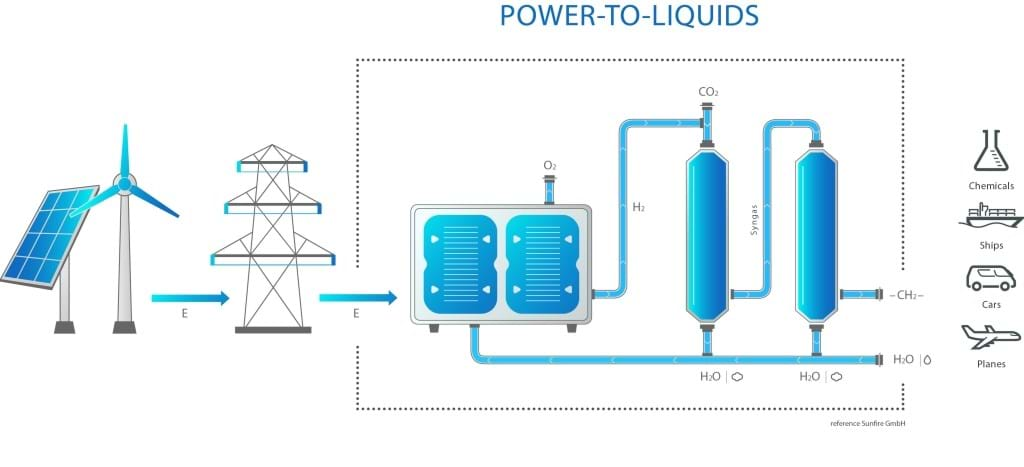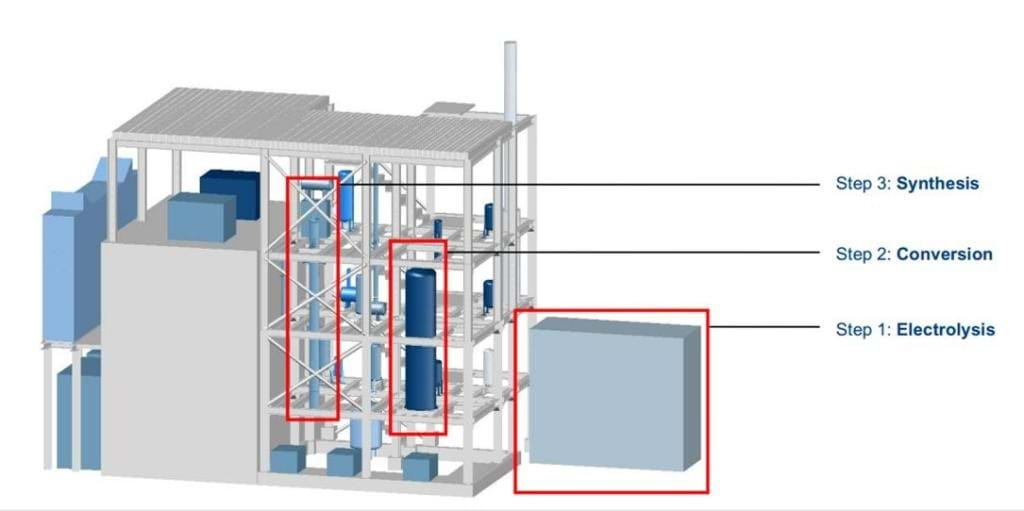Fuel alchemy (Day 200)

13th December 2014

Today, we have reached the magical milestone of my 200th day as IChemE president and to mark the occasion we have a magical story from Germany.
It's a modern-day story, but it draws on technologies, in part, developed in the 1920's by Franz Fischer and Hans Tropsch.
A German company called Sunfire have recently demonstrated a process they call Power-to-Liquids (PtL). It's a three-stage process that uses renewable electricity to convert water and CO2 to high-purity alternative energy fuels such as petrol, diesel and kerosene.

Sunfire GmbH has established a PtL demonstration rig which they say is the first of its kind in the world. The 'PtL fuels' – also known as “e-fuels” – can be used in pure form or as an admixture in combination with conventional fuels.
PtL fuels offer an environmentally friendly, resource-saving alternative which contributes to the fulfilment of greenhouse gas quotas.
Preparations for the commissioning of the rig are underway.
The PtL technology is built around the solid oxide electrolysis cells (SOECs) developed by Cleantech.
Step one of the process sees the SOECs used to convert electrical energy to chemical energy. Hydrogen is generated using steam rather than liquid water.

Step two – the reverse water-gas shift reaction – involves the use of the hydrogen
(H2) yielded by the steam electrolysis step to reduce carbon dioxide (CO2) to carbon monoxide (CO) for the third and final step.
Step three – Fischer-Tropsch Synthesis. This step sees the carbon monoxide and additional hydrogen (in the form of renewable synthesis gas) converted to petrol, diesel, kerosene and other base products for the chemicals industry (e.g. waxes).
The feeding of the heat released during synthesis back into the process ensures a high degree of system efficiency (70 per cent).
The rig’s capacity for CO2 recycling stands at 3.2 tonnes per day, and once brought into commission it will produce up to a barrel of fuel per day. Commercialisation is scheduled for 2016.
You can find out more about this very interesting project by watching this video.